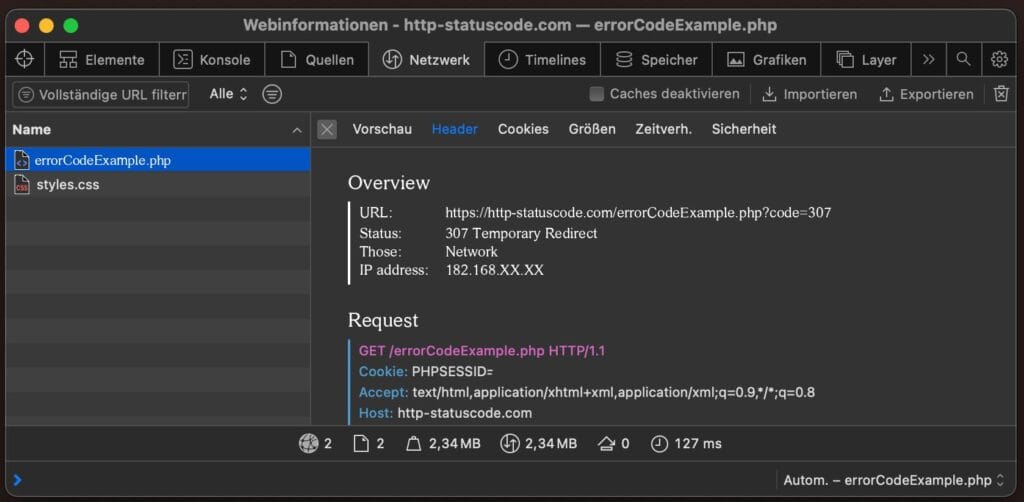
Most redirects work the same way on the face of it. You request a page, get redirected, and the browser does what's needed. But under the hood there is a difference. Especially when it comes to the HTTP method.
Status code 307 is for situations where you want to forward a request, but want the original method and content of the request to remain as they are. So no POST that turns into a GET. No empty body being lost. Just the same action, but in a different place.
Why not just 302?
That's exactly the point. 302 was never designed to preserve methods. In practice, some clients did, others didn't. Result: inconsistent behavior, depending on the browser or library.
307 is the tighter, more correct successor. It makes no assumptions. What comes in as POST, goes out as POST. The same for PUT, DELETE or PATCH. That makes it suitable for modern applications where reliability counts.
When do you use a 307 redirect?

Consider an API that temporarily runs through a different endpoint. Or a form processing that gets moved without your users noticing. You want everything to continue exactly the same, just through a different path.
Important: It is a temporary detour. If the move is permanent, look at 308. But for anything of a temporary nature, where method retention is crucial, you're stuck with 307 good.
What happens technically?
A client sends a POST to /process. The server responds with:
HTTP/1.1 307 Temporary Redirect
Location:/temporary-endpoint
The client is required to execute that same POST request again, but this time to the specified address. No conversion to GET, no additional prompts.
In tools like curl, you see it happen immediately. Also in browser developer tools, you'll neatly see two requests: the original one, and the one forwarded using the same method.
Why would you need to know this?
Because a wrong redirect can do invisible damage. Your API seems to work, but POST data disappears along the way. Or your form processing fails because the method has suddenly changed.
If you're managing routing, reverse proxies or temporary API paths, you want this to be right. And that means using 307 if you combine temporary logic with a strict method requirement.
Closing
307 redirect is not a replacement for 302. It is a correction. An explicit choice for consistency in behavior, especially in POST-driven systems.
If you use it properly, the user won't notice anything. But you know that the underlying structure remains reliable, and that's what counts. For forms, APIs and Web shops, this is a typical scenario in which good WordPress Hosting, WooCommerce Hosting and scalable Cloud Hosting really make a difference.